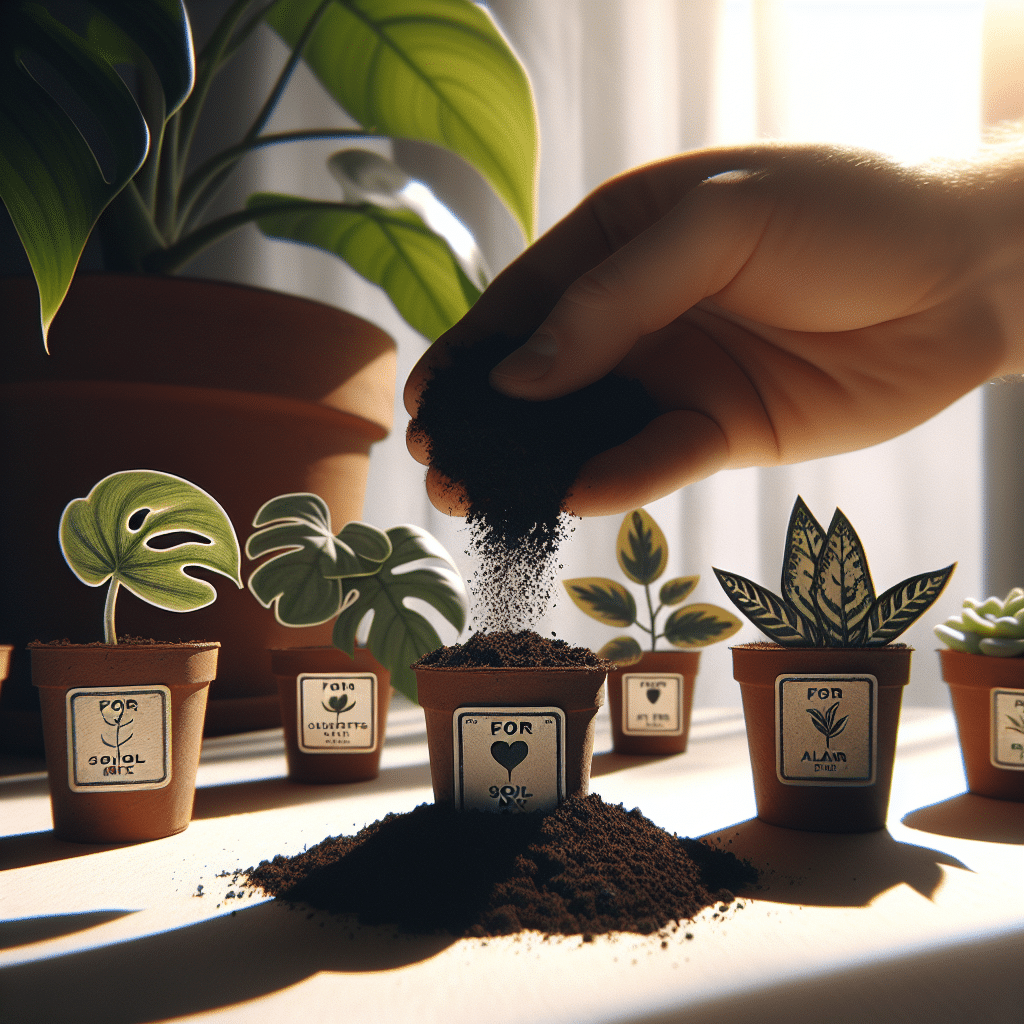When it comes to nurturing indoor plants, the right soil mix can make all the difference. Each plant species has its unique requirements based on factors like water retention, aeration, and nutrient needs. Selecting an appropriate soil mix can lead to thriving houseplants and lush greenery. Here are the best soil mixes for various types of indoor plants, ensuring you provide the ideal growing conditions.
1. General Potting Mix
A general potting mix is versatile and suitable for a wide variety of houseplants, from succulents to flowering plants. These mixes typically contain:
- Peat moss: This organic material retains moisture while providing aeration.
- Compost: Adds nutrients, enhancing soil fertility.
- Perlite or vermiculite: These materials improve drainage and help aerate the mixture.
Recommended Use: Ideal for beginners, general potting mixes can support most houseplants. Look for organic brands that ensure a gentle nutrient release.
2. Cactus and Succulent Soil Mix
Cacti and succulents thrive in arid environments, requiring a mix that drains exceedingly well. A quality cactus and succulent mix contains:
- Coconut coir: Acts as a sustainable alternative to peat, providing aeration.
- Sand: Improves drainage significantly.
- Perlite or pumice: These components prevent soil compaction and encourage airflow.
Recommended Use: Use this mix for any plants originating from desert climates, ensuring their roots remain dry and free from rot.
3. Orchid Potting Mix
Orchids necessitate a unique soil mix due to their epiphytic nature. A suitable orchid mix often includes:
- Bark chips: Allow for excellent drainage and airflow around roots.
- Sphagnum moss: Retains moisture and provides some nutrient content.
- Charcoal: Aids in drainage and absorbs impurities, promoting healthy growth.
Recommended Use: Ideal for all varieties of orchids, this mix mimics their natural environment, supporting strong root systems.
4. Seed Starting Mix
Starting seeds requires a lighter, finer mix that promotes germination and root development. The components of a high-quality seed starting mix typically include:
- Peat moss or coconut coir: Provides moisture retention without compacting.
- Perlite: Encourages drainage.
- Micro-nutrients: These can be added to support germination.
Recommended Use: Perfect for gardeners looking to raise their plants from seed, providing a nutrient-rich environment for delicate seedlings.
5. African Violet Soil Mix
African violets require a specially formulated soil mix that maintains moisture without becoming soggy. A suitable mix consists of:
- Peat moss: Helps retain moisture while allowing for air circulation.
- Perlite: Ensures proper drainage and prevents compaction.
- Worm castings: Provide nutrients and beneficial microbes.
Recommended Use: Exclusively for African violets, this mix helps promote flowering and overall plant health while preventing root rot.
6. Fertilized Potting Mix
For plants with higher nutrient demands, a fertilized potting mix is ideal. These mixes generally include:
- Slow-release fertilizers: Promote sustained growth without the risk of over-fertilizing.
- Organic matter: Ingredients like compost or aged manure enrich the mix.
Recommended Use: Best for heavy feeders such as Ficus, Pothos, and Philodendrons, ensuring they receive the nutrients they need throughout their growing season.
7. Bonsai Soil Mix
Creating the perfect environment for bonsai trees requires a specialized soil mix that mimics their natural habitat. A bonsai mix typically contains:
- Akadama: A clay soil that retains moisture while offering high drainage capabilities.
- Pumice: Helps maintain airflow and drainage.
- Lava rock: Aids in moisture retention without compacting.
Recommended Use: Essential for bonsai enthusiasts, this mix supports proper growth while allowing for practice in maintaining the aesthetics of the tree.
8. Herb Soil Mix
Growing herbs indoors necessitates a mix that balances moisture retention and drainage. A basic herb soil mix includes:
- Organic potting soil: Provides a rich base filled with essential nutrients.
- Perlite: Improves aeration and prevents soil compaction.
- Compost: Boosts nutrient levels for vigorous growth.
Recommended Use: Suitable for growing culinary herbs like basil, parsley, and thyme in containers, resulting in tasty harvests.
9. Ferns Soil Mix
Ferns prefer moist environments that mimic forest conditions. An effective fern soil mix often incorporates:
- Peat moss: Offers moisture retention without compacting.
- Pine bark or leaf litter: Provides essential organic matter and enhances drainage.
- Perlite: Improves airflow and drainage suitable for delicate fern roots.
Recommended Use: Best for ferns, this mix supports lush foliage while retaining enough moisture for optimal growth.
10. Aquatic Plant Soil
For those interested in growing indoor aquatic plants, a specific soil mix is paramount. An aquatic mix usually consists of:
- Ceramics or clay granules: Heavy enough to remain submerged while providing stability for root systems.
- Organic matter: Encourages beneficial bacteria for nutrient uptake.
Recommended Use: Best for aquatic plants like Anubias and Java Ferns, ensuring their growth in water-based environments.
11. Customizing Your Soil Mix
While store-bought mixes provide convenience, customizing your soil can yield even better results. By integrating various components based on specific plant needs:
- Experiment with ratios: Try different percentages of peat, perlite, and compost to tailor moisture and aeration to your indoor plants.
- Test pH levels: Some plants prefer slightly acidic or neutral pH, so adjusting your mix can enhance growth.
- Consider local resources: Incorporate indigenous materials for better sustainability and resource management.
12. Tips for Maintaining Indoor Soil Quality
To ensure your indoor plants thrive, maintaining soil quality is crucial. Here are some simple tips:
- Repotting: Regularly repotting to refresh soil nutrients prevents compaction and promotes healthy root growth.
- Monitoring Watering Needs: Overwatering can lead to root rot; adjust watering practices based on mix drainage.
- Applying Mulch: Mulching prevents moisture loss and suppresses weeds if applicable.
Choosing the right soil mix not only enhances the health of your indoor plants but also contributes to their overall aesthetic appeal. By understanding the specific needs of your plants and selecting the most suitable mix, you can cultivate a flourishing indoor garden.
